Phishing attack
What makes a BEC attack different than a typical phishing email?
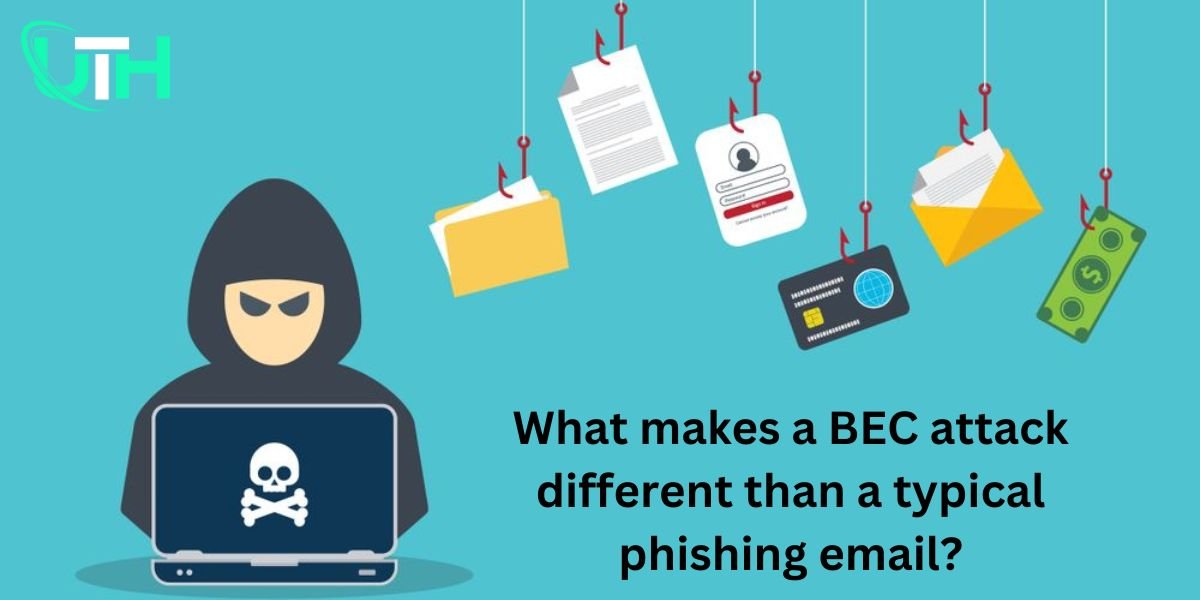
In today’s digital age, cybercriminals or attackers use many illegal activities to exploit vulnerabilities, and two common threats are Business Email Compromise (BEC) attacks and phishing emails. While they both fall under the umbrella of cybercrime, they differ significantly in terms of execution, target audience, and objectives. Below is a detailed comparison of BEC attacks and typical phishing emails.
1. Definition and Nature of the Attack
- BEC Attack:
A Business Email Compromise (BEC) attack is a highly targeted form of cyberattack that focuses on businesses or organizations. The attackers use social engineering activities to impersonate a trusted individual, such as an executive, supplier, or partner, to cheat employees into transferring money or important information. - Phishing Email:
Phishing emails are broader in scope and are designed to target a wide audience. These emails aim to trick individuals into clicking on malicious links or downloading harmful attachments—often to hack personal information such as login credentials or financial data.
2. Target Audience
- BEC Attack:
Targets specific individuals within an organization, often those with access to financial systems or sensitive information, such as CEOs, CFOs, HR personnel, or finance teams. - Phishing Email:
Casts a wide net, targeting anyone who might unknowingly fall for the scam. This includes individuals, customers, or employees at any level.
3. Objective
- BEC Attack:
The primary goal is financial gain through:- Fraudulent wire transfers.
- Unauthorized access to sensitive business data.
- Manipulation of payroll or invoicing systems.
- Phishing Email:
The goal is generally to breach personal data, such as:- Login credentials.
- Credit card information.
- You should not disclose Social Security numbers or any other private information.
4. Methodology
- BEC Attack:
- Depends on social engineering and research.
- It may involve long-term observation of the target to gather information and mimic communication styles.
- They frequently employ faked email addresses or compromised authentic accounts to boost their reputation.
- Phishing Email:
- It typically employs mass email campaigns with generic content.
- It frequently contains malicious links or attachments that aim to infect systems or steal data.
- They might use deceptive methods such as fictitious account suspension notifications.
5. Content and Tone
- BEC Attack:
- Uses professional and convincing language.
- Messages are often brief, urgent, and crafted to look like legitimate business communication.
- Common examples include:
- A supplier has submitted a fraudulent invoice demanding immediate payment.
- A finance team member received an email from the “CEO” directing them to transfer funds.
- Phishing Email:
- Content is often generic and less personalized.
- Poor grammar, spelling errors, and unrealistic offers (such as winning a lottery you never entered) may be included.
- Threats of account closure are often used as scare tactics to elicit immediate action.
6. Technical Sophistication
- BEC Attack:
- Highly advanced and well-planned.
- It seldom includes harmful links or attachments, making it more challenging for email filters to identify.
- It depends more on deceit and trust than on technical tricks.
- Phishing Email:
- Less sophisticated and easier to detect.
- Spam filters frequently flag them because they contain malicious links, attachments, or suspicious domains.
7. Delivery Method
- BEC Attack:
- They frequently originate from forged email addresses that bear a striking resemblance to authentic ones.
- The organization may have compromised the email accounts of trusted parties.
- Phishing Email:
- Usually, they originate from email addresses that are unknown or generic.
- Emails may originate from domains that are easily identifiable as fraudulent, such as a random string of letters or numbers.
8. Detection and prevention
- BEC Attack:
- It is difficult to detect due to the lack of malicious content.
- It requires training employees to recognize unusual requests, especially those involving financial transactions or sensitive data.
- Phishing Email:
- Spam filters and antivirus software can detect it more easily.
- Regular training can help users identify red flags like poor grammar or suspicious links.
9. Impact
- BEC Attack:
- It can result in significant financial losses, sometimes amounting to millions of dollars.
- This could potentially jeopardize confidential company data, resulting in harm to the company’s reputation.
- Phishing Email:
- The attacks typically target individuals, resulting in smaller-scale financial losses or compromised credentials.
- It can lead to inconvenience and possible identity theft for those who are affected.
10. Example Scenarios
- BEC Attack Example:
A cybercriminal impersonates the CEO of a company and sends an urgent email to the finance department requesting a wire transfer to a specific account. The email looks legitimate because it uses the CEO’s writing style and contains no obvious errors. - Phishing Email Example:
An email claims to be from your bank, asking you to click a link to verify your account details. The link leads to a fraudulent website that aims to steal your login credentials.
Conclusion
While both BEC attacks and phishing emails are forms of cybercrime, BEC attacks are more targeted, sophisticated, and financially damaging. Understanding these differences is crucial for implementing effective cybersecurity measures. Organizations should invest in employee training, use advanced email filtering tools, and establish strict verification protocols for financial transactions to protect against these threats.
Related News:
How to Report Spoof or Phishing Emails to PayPal
Where do I forward Microsoft phishing emails?
Apple ID phishing scam targets users with fake suspension emails
-
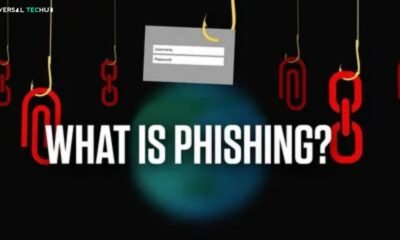
 Phishing attack6 months ago
Phishing attack6 months agoWhat is Spear Phishing and How You Can Identify This Scam?
-
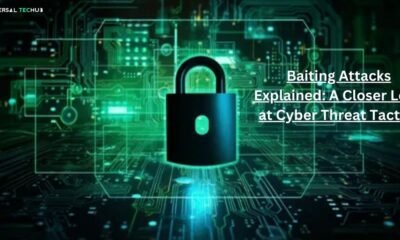
 Social engineering attack8 months ago
Social engineering attack8 months agoBaiting Attacks Explained: A Closer Look at Cyber Threat Tactics
-
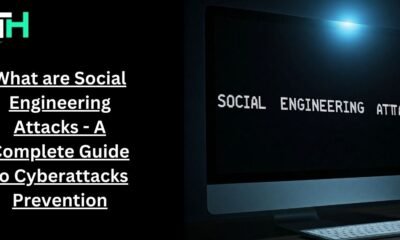
 Social engineering attack6 months ago
Social engineering attack6 months agoWhat are Social Engineering Attacks – A Complete Guide to Cyberattacks Prevention
-

 Social engineering attack8 months ago
Social engineering attack8 months agoSpear Phishing Attack: A Targeted Cyber Threat
-
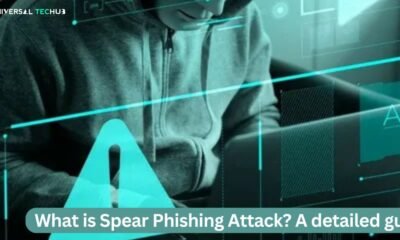
 Social engineering attack8 months ago
Social engineering attack8 months agoWhat is spear phishing attack? A detailed guide
-
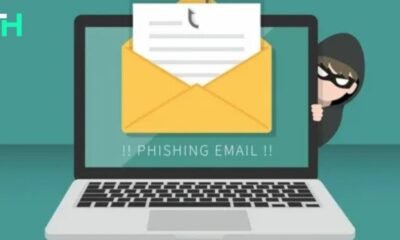
 Phishing attack6 months ago
Phishing attack6 months agoWhat Are Phishing Emails? A guide for you
-
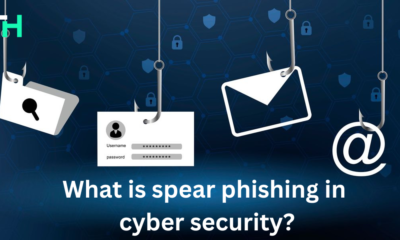
 Social engineering attack8 months ago
Social engineering attack8 months agoWhat is spear phishing in cyber security?
-
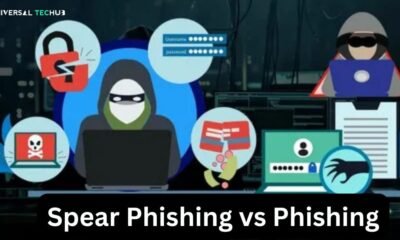
 Social engineering attack8 months ago
Social engineering attack8 months agoSpear phishing vs phishing: Understand the Risks




















